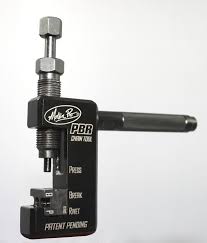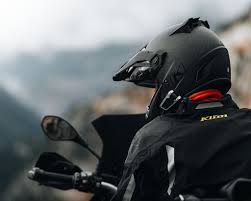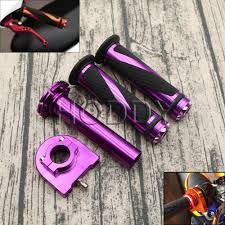Enhance Your Cycling Safety with a POC Helmet

The Importance of POC Helmets in Cycling
Cycling is a popular and exhilarating sport enjoyed by people of all ages around the world. Whether you’re a casual rider or a competitive athlete, safety should always be a top priority when hitting the road or trails. One essential piece of safety gear that every cyclist should invest in is a high-quality helmet.
When it comes to cycling helmets, POC stands out as a brand that prioritises both safety and style. POC helmets are designed with cutting-edge technology and innovative features to provide maximum protection for riders in the event of a crash.
One key feature of POC helmets is their use of advanced materials such as MIPS (Multi-directional Impact Protection System) and Aramid Bridge technology. These materials are strategically integrated into the helmet’s design to enhance impact resistance and reduce rotational forces on the brain during an accident.
In addition to their superior safety features, POC helmets are also known for their sleek and modern designs. Cyclists can choose from a range of styles, colours, and fits to find a helmet that not only offers top-notch protection but also complements their personal style.
Furthermore, POC is committed to sustainability and environmental responsibility. Many POC helmets are made from recycled or eco-friendly materials, making them an eco-conscious choice for environmentally aware cyclists.
Whether you’re cruising through city streets or tackling challenging mountain trails, wearing a POC helmet can give you peace of mind knowing that you’re well-protected in case of an accident. Investing in a high-quality helmet like those offered by POC is an investment in your safety and well-being as you enjoy the thrill of cycling.
Remember, safety always comes first when it comes to cycling. So before you hop on your bike for your next adventure, make sure to strap on your POC helmet for maximum protection on the road ahead!
7 Essential Tips for Maintaining and Using Your POC Helmet Safely
- Ensure the helmet fits snugly on your head to provide maximum protection.
- Check for any cracks, dents, or damage before each use.
- Replace your helmet if it has been involved in a crash or impact.
- Make sure the helmet meets safety standards specific to your region.
- Keep the helmet clean by following the manufacturer’s cleaning instructions.
- Store the helmet in a cool, dry place away from direct sunlight when not in use.
- Avoid attaching anything heavy or sharp to the helmet that could compromise its integrity.
Ensure the helmet fits snugly on your head to provide maximum protection.
To ensure maximum protection while cycling, it is crucial to make sure that your POC helmet fits snugly on your head. A properly fitting helmet not only enhances comfort but also plays a vital role in safeguarding you in the event of a crash or impact. A snug fit helps to prevent the helmet from shifting or coming off during sudden movements, ensuring that it stays securely in place to provide optimal protection for your head. Remember, a well-fitted POC helmet is your best ally on the road, offering peace of mind and safety as you enjoy your cycling adventures.
Check for any cracks, dents, or damage before each use.
Before each use, it is crucial to inspect your POC helmet for any cracks, dents, or damage. A thorough visual check can help ensure that the helmet’s structural integrity is intact and capable of providing optimal protection in the event of a fall or impact. Even minor damage can compromise the effectiveness of the helmet, so it is essential to address any issues promptly and replace the helmet if necessary. By taking the time to examine your POC helmet before every ride, you are prioritising safety and safeguarding yourself against potential risks on the road or trails.
Replace your helmet if it has been involved in a crash or impact.
It is crucial to replace your POC helmet if it has been involved in a crash or impact. Even if the damage is not visible, the structural integrity of the helmet may have been compromised, making it less effective in protecting you in future accidents. Safety should always be a top priority when cycling, so investing in a new helmet after any impact ensures that you have reliable protection on every ride.
Make sure the helmet meets safety standards specific to your region.
When selecting a POC helmet for cycling, it is crucial to ensure that the helmet meets safety standards that are specific to your region. Different countries and regions may have varying safety regulations and requirements for cycling helmets. By choosing a POC helmet that complies with the safety standards in your area, you can be confident that you are investing in a helmet that offers optimal protection and performance tailored to the conditions and requirements of where you ride. Always prioritise safety by selecting a POC helmet that meets the necessary safety standards specific to your region.
Keep the helmet clean by following the manufacturer’s cleaning instructions.
To ensure the optimal performance and longevity of your POC helmet, it is crucial to keep it clean by adhering to the manufacturer’s cleaning instructions. Regular cleaning not only helps maintain the helmet’s appearance but also ensures that it continues to provide the necessary protection in case of a fall or impact. By following the recommended cleaning guidelines provided by POC, you can help extend the lifespan of your helmet and guarantee that it remains in top condition for your cycling adventures.
Store the helmet in a cool, dry place away from direct sunlight when not in use.
To ensure the longevity and effectiveness of your POC helmet, it is essential to store it in a cool, dry place away from direct sunlight when not in use. Exposing the helmet to prolonged sunlight or high temperatures can weaken its materials and compromise its protective capabilities. By storing your POC helmet properly, you can help maintain its integrity and ensure that it continues to provide optimal safety and protection every time you hit the road or trails.
Avoid attaching anything heavy or sharp to the helmet that could compromise its integrity.
It is crucial to avoid attaching anything heavy or sharp to your POC helmet as it could compromise its integrity and effectiveness in protecting you during a cycling accident. Adding extra weight or sharp objects to the helmet can weaken its structure and potentially cause it to fail upon impact. To ensure the helmet’s optimal performance and your safety, always adhere to manufacturer guidelines and refrain from attaching any items that could jeopardise its protective capabilities.



